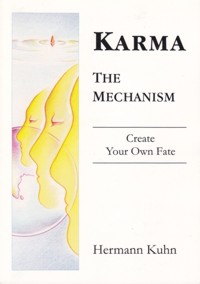Chapter 9 of the Tattvarthasutra
(1) By blocking our initial attraction to karma, we prevent new karmic matter from attaching to our consciousness.
(2) By
- conducting our activities consciously (gupti)
- being aware of our personal behavior (samiti)
- considering the needs of others (dharma)
- rethinking our own situation (anupreksa)
- persevering at the confrontation with obstacles (parisah-jaya)
- directing our actions towards reaching freedom from all karmic limitations (charitra)
we stop the attachment of (new) karma.
(3) The intentional confrontation (tapas - the burning) of karma dissolves existing karma and prevents the binding of new karma.
(4) Consciously conducting our activities (gupti) means to
intelligently direct our thoughts, speech and action.
(5) To be aware of our personal behavior (samiti) means to perform the events of daily life - walking, speaking, eating, handling objects and depositing waste - in a conscious way.
(6) Considering the needs of other beings (dharma) is
- forgiving (ourselves and others)
- giving up pride, disdain and arrogance
- being direct and clear in our communication
- being pure in our intentions
- being honest
- being alert (so we prevent injury to other beings)
- resolving problematic situations
- giving up activities (that others can perform better)
- keeping distance and
- to have the intention to grow.
(7) Reflecting on the following perspectives (anupreksa) creates an alternative (new) outlook on our life:
- Everything we confront in this world is transitory and subject to change.
- As long as we focus on limiting themes of life, we attract restrictions (karma) and experience them.
- The sequence of bodily existences we presently experience significantly restricts our potential abilities.
- Only we cause all the situations and actions we experience.
- Our consciousness is fundamentally different from the non-living elements (matter, time, space etc.) that enable us to experience activity (karma) within this universe.
- Our present state of incarnation inhibits the perception of our real, majestic self.
- Our longing for limiting activities (karma) is the main cause for our bodily existence.
- We can stop this longing (for new karma).
- We can dissolve our prejudices, strong negative emotions, laziness, intolerance etc. (our existing karma).
- What do we expect of this universe?
- What is the purpose of reality - and do we live up to our part in it?
- How often do we gain access to effective methods that free us from all karmic restrictions?
(8) While practicing the activities and attitudes mentioned in the preceding sutras, obstacles may arise that impede our consequent pursuit of this path. These obstacles can be neutralized by patience and perseverance (parisah-jaya).
(9) 22 obstacles may arise while we strive for freedom from all karmic limitations:
- hunger
- thirst
- coldness
- heat
- annoyance by insects
- defenselessness
- ennui, boredom, discontent, lethargy, laziness, indifference
- distraction
- 'homelessness' (the craving for - material and emotional - stability)
- 'sitting' (on the intention to get going without ever beginning to move)
- 'sleeping' (the fading of our intention to grow)
- insults, slander, abuse
- obstruction (of our progress by external factors)
- unwillingness to accept necessary help from others or to ask for support (overcoming our pride)
- failure in the attempt to obtain help
- illness
- pain
- lack of sincerity (the spoiling of our intentions)
- praise (by someone whose admiration we disprove) or irreverence (by someone whose opinion we value)
- vanity (because of our great learning)
- lack of knowledge, ignorance (the feeling that we never have sufficient knowledge for a successful pursuit of our path to liberation)
- disappointment at the effectiveness of our knowledge (because we fail to gain supernatural powers).
(10) In the tenth stage of development (suksma sampararaya) only 14 obstacles may occur.
(11) In the thirteenth stage of development (sayogakevali) 11 obstacles may occur.
(12) As long as we experience the more intense forms of anger, pride, deceit and greed, all obstacles may occur.
(13) - Vanity because of our own great learning as well as
- ignorance
are both manifestations of karma that blocks or restricts our access to knowledge.
(14) Disappointment at the effectiveness of our knowledge and lack of support are manifestations of karmas that prevent insight and understanding and cause obstruction in life.
(15) Defenselessness, ennui, distraction, 'sitting' on the intention to grow, insult, the unwillingness to accept help and vanity because of great learning are manifestations of karma that obstructs right action.
(16) All other obstacles are manifestations of karma that determines our feeling of life.
(17) A maximum of 19 obstacles can occur simultaneously.
(18) Directing our activities (charitra) towards liberation means:
- equanimity
- restoring equanimity after we lost it
- completing all unfinished activities
- actively orienting our life towards expansion
- implementing the activities and attitudes listed in this chapter.
 Hermann Kuhn
Hermann Kuhn
